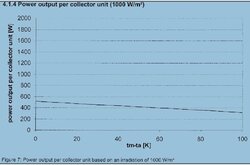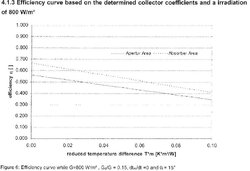Hello all.
Been gone for a while, but am back at it again
Have some specs on some evacuated tubes to heat water. Was hoping to incorporate them into the slab heat system going in. I have these in storage and am kind of stuck with them either way.
Does anyone have any idea how they rank in regards to heating water?
Has anyone here ever use evacuated tubes to heat water?
Anyone use them in a in-floor slab system?
I am going to go back and look at an old thread I started a year or two ago and re-read all.
Either way....
If I understand what I'm reading on the spec tag, which I may not, looks like they are supposed to create 3,942 MJ/Year... about 3,736,295 BTU/Year... which breaks down to about 10,236 BTUs per panel per day. The other attachments are from a study.
I have NO idea what they are basing a "day" on in regards to solar irradiation. I assume the numbers include longer days in the summer... dunno?
Anyone here have any thoughts?
Cheers,
S+W
Been gone for a while, but am back at it again

Have some specs on some evacuated tubes to heat water. Was hoping to incorporate them into the slab heat system going in. I have these in storage and am kind of stuck with them either way.
Does anyone have any idea how they rank in regards to heating water?
Has anyone here ever use evacuated tubes to heat water?
Anyone use them in a in-floor slab system?
I am going to go back and look at an old thread I started a year or two ago and re-read all.
Either way....
If I understand what I'm reading on the spec tag, which I may not, looks like they are supposed to create 3,942 MJ/Year... about 3,736,295 BTU/Year... which breaks down to about 10,236 BTUs per panel per day. The other attachments are from a study.
I have NO idea what they are basing a "day" on in regards to solar irradiation. I assume the numbers include longer days in the summer... dunno?
Anyone here have any thoughts?
Cheers,
S+W





 Definitely go to Gary's build it solar site. make a tank to store the heat in, the plans on his site are really simple and easy to follow.
Definitely go to Gary's build it solar site. make a tank to store the heat in, the plans on his site are really simple and easy to follow.